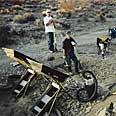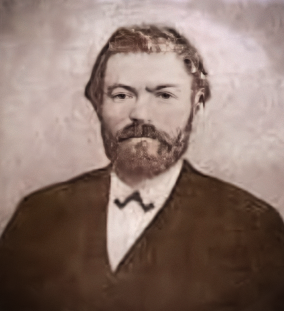All Articles
Legislative and Regulatory Update
January 2009 by Scott Harn
• A bumpy ride for minersMiners can expect some new obstacles to pop up over the next four years based on the choices President-elect Obama has made so far.
Remember John Leshy? He went on to be a professor after he was solicitor of the Interior Department under President Clinton. In 1997, he authored the now infamous “Mill site Opinion,” which prevented larger mining operations from utilizing public land for processing by limiting mill sites to five acres for each 20-acre claim. The opinion was reversed by the Bush administration.
Senate Majority Leader Harry Reid (D-Nevada), commenting on the opinion, stated it “...could have been written by somebody in the eighth grade rather than this professor.”
Now Leshy is back. Obama put him in charge of the transition team overseeing the Interior Department.
Laura Skaer, executive director of the Northwest Mining Association, characterized John Leshy as someone who “made a career out of coming up with cockamamie interpretations of the US Mining Law.”
We may see more public lands placed off-limits to mining, stricter regulations on miners, a move to revisit the Clinton-era Roadless Rule, and expanded use of the Endangered Species Act.
President-elect Obama previously declared his administration will address “climate change” by establishing an “economy-wide cap-and-trade program to reduce greenhouse gas emissions 80 percent by 2050.”
• Speaking of climate change
On December 11, 2008, a US Senate Minority Report was published by the Environment and Public Works Committee, declaring that over 650 international scientists have united to debunk global warming claims.
Many prominent climatologists and environmental scientists are quoted as dissenters to the man-made global warming theory, including some who previously supported the Kyoto Treaty or were members of the United Nations Intergovernmental Panel on Climate Change (IPCC).
“The quantity of CO2 we produce is insignificant in terms of the natural circulation between air, water and soil... I am doing a detailed assessment of the UN IPCC reports and the Summaries for Policy Makers, identifying the way in which the Summaries have distorted the science,” stated South African Nuclear Physicist and Chemical Engineer Dr. Philip Lloyd, a UN IPCC co-coordinating lead author who has authored over 150 refereed publications.
Warming fears are the “worst scientific scandal in the history… When people come to know what the truth is, they will feel deceived by science and scientists,” said UN IPCC Japanese Scientist Dr. Kiminori Itoh, an award-winning PhD environmental physical chemist.
“Many [scientists] are now searching for a way to back out quietly (from promoting warming fears), without having their professional careers ruined,” stated atmospheric physicist James A. Peden, formerly of the Space Research and Coordination Center in Pittsburgh.
• “Recreational” mining
We have mentioned this before—the words “recreational” and “mining” do not belong in the same sentence when dealing with public lands.
On November 6, 2008, the US Forest Service published a rule in the Federal Register titled “Clarification for the Appropriate Use of a Criminal or a Civil Citation To Enforce Mineral Regulations (See Federal Register, Vol. 73, No. 216, pg. 65984).
Under the rule, the Forest Service states it will operate as it has been—a Notice of Intent or Plan of Operation is required for activities that may cause a significant disturbance of surface resources, which now includes camping. The Service states that requesting compliance with regulations is the preferred enforcement alternative.
The rule states, “A citation issued pursuant to 36 CFR part 261, subpart A, will not be the operator’s first notice that the Forest Service believes that operations the operator is conducting require an approved operating plan. When unauthorized operations unnecessarily or unreasonably cause injury, loss or damage to surface resources, 36 CFR 228.7(b) requires the authorized officer to first serve a notice of noncompliance upon the operator.”
The Forest Service made it clear that recreational activities are not protected by the 1872 Mining Law.
The rule states that those “whose interest in locatable mineral operations is primarily recreational” exceed the scope of the US mining laws.
They specifically point to “such functions, work, or activities that... include educational seminars, treasure hunts, and use of mining claims as sites for hunting camps or summer homes. ...A major impetus for this rulemaking culminating in the final rule is to prohibit operations conducted under color of the mining laws that clearly are not within the scope of bona fide operations consistent with the United States mining laws.”
© ICMJ's Prospecting and Mining Journal, CMJ Inc.
Next Article »« Previous Article
Additional articles that might interest you...
The Treasure Detective—Part IV The Story of Goldstone Nuggets
October 2006
 A treasure detective, like any detective, is looking for a clue from which he can develop information to solve a mystery. Who? Why? When? The detective sniffs out a trail that will lead eventually to some undiscovered cache of coins...
A treasure detective, like any detective, is looking for a clue from which he can develop information to solve a mystery. Who? Why? When? The detective sniffs out a trail that will lead eventually to some undiscovered cache of coins...
 A treasure detective, like any detective, is looking for a clue from which he can develop information to solve a mystery. Who? Why? When? The detective sniffs out a trail that will lead eventually to some undiscovered cache of coins...
A treasure detective, like any detective, is looking for a clue from which he can develop information to solve a mystery. Who? Why? When? The detective sniffs out a trail that will lead eventually to some undiscovered cache of coins...
The Bawl Mill
December 2002
• Your tax dollars at work
• He's an "expert" in stupidity
• No sense of humor
• Your tax dollars at work
• He's an "expert" in stupidity
• No sense of humor
Suction Dredging Battle Escalates
December 2014
• State attorneys claim the Court of Appeals wrongly relied on South Dakota Mining Association v. Lawrence County regarding federal preemption...
• State attorneys claim the Court of Appeals wrongly relied on South Dakota Mining Association v. Lawrence County regarding federal preemption...
Mining Stock Quotes and Mineral & Metal Prices
February 2012
Mining Stock Quotes and Mineral & Metal Prices
January 2019
Alternative Financing Alternatives
October 2016
How can a miner or prospector take advantage of these speedy financing options while avoiding the risks associated with borrowing from so-called “shadow banks?”
How can a miner or prospector take advantage of these speedy financing options while avoiding the risks associated with borrowing from so-called “shadow banks?”
Subscription Required:
The Bawl Mill
• A Word From the Editor
• Reading A River: Finding The Paystreaks—Part II
• Placer Gold in the Ortiz Mountains
• Miners Discuss Struggles at NWMA
• Ask The Experts—Where to Take Sulfide Ore for Processing
• Ask The Experts—Where Would The Most Gold Tend To Be In This Deposit?
• East Coast Dredger Heads West - Part I
• Growing Pains of the Learning Curve
• Stillwater At Half Speed
• Elko County Has Highest State Median Income
• Melman on Gold & Silver
• Mining Stock Quotes and Mineral & Metal Prices
• Pebble Deposit Reveals Mineral Potential
Free:









